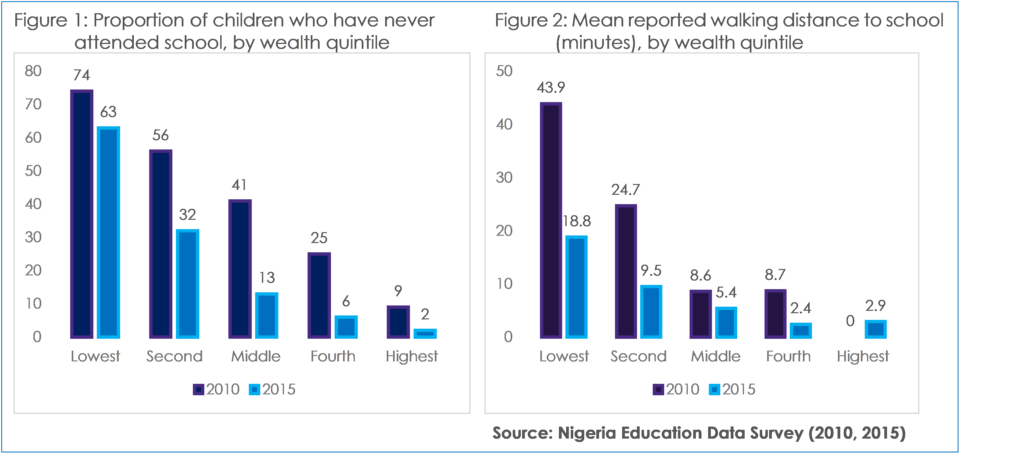
Inclusive education implies that education (quantity and quality) is accessible to all children, irrespective of their individual circumstances. However, in Nigeria, some vulnerable groups of children are found to be excluded from quality education. These include children with disabilities, children from nomadic groups, many of the children in the Almajiri education system, and internally displaced children. Worryingly, the socio-cultural and economic backgrounds of children in Nigeria continue to influence their access to education.
Furthermore, education data shows gaps in access and learning between the popular dimensions of exclusion: gender, location of residence, region, and wealth. These figures often mask the most critical dimensions and their underlying drivers. Such insights are what CSEA’s ongoing research project, on Educational Performance in Nigeria under the framework of the Southern Voice on the State of the SDGs (SVSS), aims to unveil.
In this issue, we highlight some equity concerns relating to access and quality of basic education in Nigeria.
Access
Figure 1 below shows the percentage of children that have never attended school, disaggregated by their economic background. Despite improvements between 2010 and 2015, it is clear that most gains in access accrued to the intermediate wealth quintiles, with most children in the poorest households still excluded. However, walking time to school has fallen, especially for children from the poorest households (Figure 2). Yet, for these poorest households, the remarkable improvement in proximity to schools has not been reflected in attendance by their children. This signals that factors other than proximity to school are hindering their access to school.

The other factors may include non-tuition costs that households have to bear, opportunity cost of sending kids to school, attitudes towards formal education, poor school quality, etc. The recent case of Success Adegor in Delta State illustrates clearly how auxiliary cost of education is driving exclusion. According to NEDS (2015) data, 93.7% of the poorest households reported one or more types of school- related expenditure, despite basic education being free and compulsory in principle. Furthermore, children from poorer households spend less time in school than their counterparts from wealthier households. For instance, 79% of children from the richest households spend at least 7 hours in school compared to just 25% of children from the poorest households. Moreover, the time spent away from school by children from poorer households is often not used for learning-related activities. About 76% of the children from the poorest households do no homework outside school relative to only 16.4% of children from the richest households.
Quality
Figure 3 below provides a very simplistic measure of education quality, the ability to read three pre-school level sentences. The figure shows how equitable basic learning is across socioeconomic groups. Specifically, it is observed that children from wealthier households maintain an edge in learning over their counterparts from households in lower wealth quintiles throughout the ten-year period of basic education in Nigeria. Strikingly, it takes until Primary 5 for half of the children from the lowest wealth quintile to become literate, a full 5 years behind the children from the highest wealth quintile.
One can observe similar results when we consider another measure of quality education, numeracy (Figure 4). The children from poorest households are left behind and only until Primary 4 are half of them able to become numerate. Again, a full 5 years behind children from the wealthiest households.

